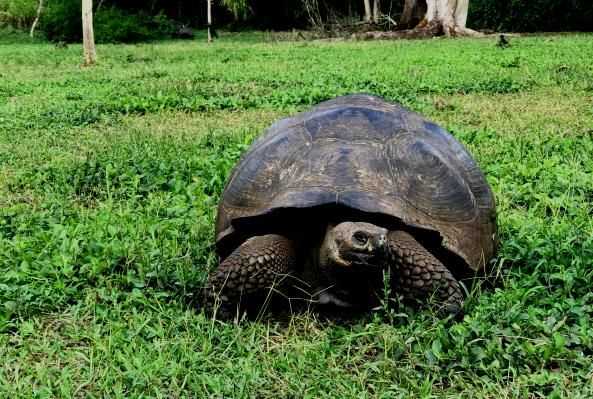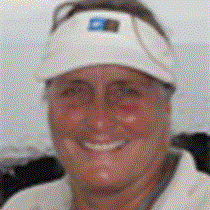We left our calm anchorage in the wee hours and rocked and rolled a bit as we headed to the north to anchor at dawn in Academy Bay, Santa Cruz. After our full and interesting day at Floreana most of us slept thru much of the navigation – especially the 20 energetic Global Explorer kids who are traveling with us this week! We awoke to a gray, wet day and a town and island shrouded in garua mist. The garua blew off by late morning and we had cool and pleasant weather.
Boats and ships of many varieties shared the harbor with us and right after a hearty breakfast of eggs rancheros, fresh tropical fruits and/or cereal we boarded the fleet of Zodiacs with our naturalist guides and motored in to the main town dock. Buses took us up to the entrance of the National Park and Darwin Research Station. We enjoyed learning about the tortoise breeding program and how the Park and Station have released captive bred tortoises back into the wild. Thru their efforts they have brought a couple of the most endangered species of tortoises back from the brink of extinction. We saw Super Diego who has been the best breeder of all. There were only 15 adult tortoises on the southeastern island of Española in the mid 60’s and now there are over 2000 on the island, so this program has been quite a success!
We walked through town, shopping in the numerous colorful boutiques and taking pictures at the fisherman’s market where pelicans and fat sea lions ate the fish scraps. At The Rock café we enjoyed a cool glass of maracuya (passion fruit) juice and then chose between two options. One group went with Vanessa to visit a small private school, Tomas de Berlanga which is supported by Lindblad and National Geographic, and two groups, accompanied by Walter and Enrique, went to visit a family run coffee, cocoa and sugarcane farm.
The students proudly showed our guests around the school and the Global Explorer kids were delighted with the open air classrooms! At the farm we learned how coffee and sugar cane juice are processed and we sampled the final products. The cocoa pods grow right out of the tree truck! Don Ariano, the farm owner, explained how the sugar cane can be fermented into strong, clear liquor.
Next on our agenda was a visit to a lava tunnel. Many of us walked all the way through it – travelling along about a kilometer in distance underground! We were amazed at the size of the chambers in some areas.
We boarded the buses again and drove up and over the island to the southern slopes where we had a delicious buffet lunch at Rancho Manzanillo. Then we went with our naturalists to learn about and photograph the giant tortoises. There were tortoises of all sizes, grazing, resting and slowly lumbering across the lush grassy fields. These huge and ancient, emblematic reptiles gave the islands their name. “Galapago” means “saddle” and the early Spaniards who first visited these islands thought the tortoises looked like big leather saddles.
In those early days tortoises could be seen in great numbers all over all the islands and even down close to the coast. Because they are good to eat, tortoise meat was valued by whalers and sailors who came to the islands and hundreds of thousands of them were taken to be used as food. Thanks to the work of the Charles Darwin Research Station, the National Park and the education of the local inhabitants, the tortoise populations are once again slowly increasing.
We wrapped up our busy and interesting day on board the National Geographic Islander with a wonderful folkloric music and dance show by the group EcoArte. It has been a very full day in the islas encantadas!









